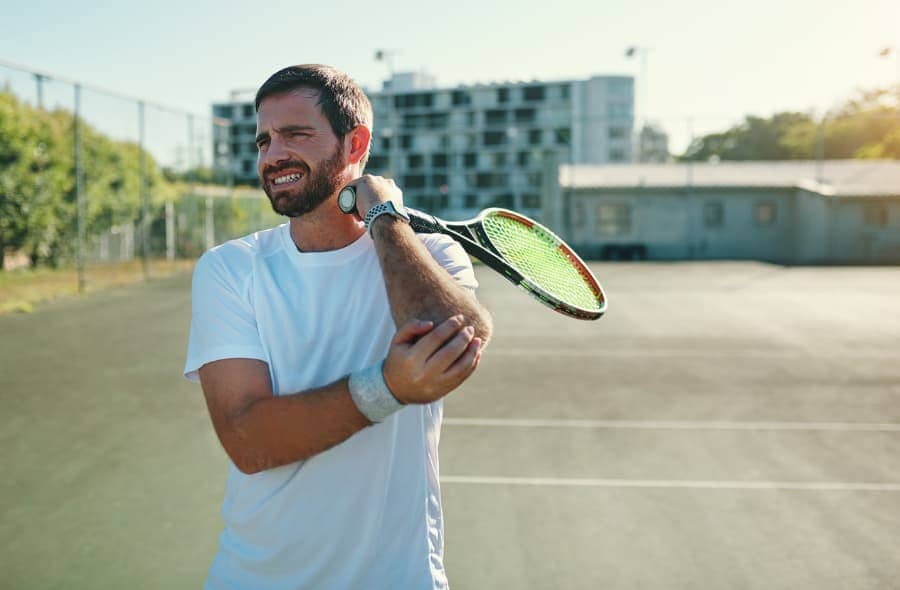Even if you don’t play tennis or golf, you can still get tennis or golf elbow. Both overuse injuries are the result of repetitive movement of the arm and wrist, but they can cause inflammation in different areas of the elbow. Led by three award-winning and experienced orthopedic surgeons, High Mountain Orthopedics helps patients of all ages maintain optimal mobility. Here, we compare these injuries and discuss available golf and tennis elbow treatment in Wayne, NJ.
What Is Tennis Elbow?
Tennis elbow, or lateral epicondylitis, is an overuse and muscle strain injury that causes pain in the outside areas of the elbow and forearm. The condition results from subtle yet abrupt injury of muscles and tendons around the outside of the body part. Common in adults between the ages of 30 and 50, tennis elbow may also affect the back of your elbow or posterior.
Naturally, tennis players suffer from this condition, but they are not alone in their pain. Carpenters, painters, and plumbers also tend to get tennis elbow due to the repetitive nature of their tasks. Anyone may experience the injury after completing seasonal activities like gardening, raking, or cutting wood.
You may suffer from tennis elbow if you experience the following symptoms:
- Constant ache around the elbow
- Pain that increases slowly near the outside of the elbow
- Discomfort when performing tasks that involve grasping, lifting, or reaching
- Sharper pain when shaking hands or squeezing objects
- Heightened pain when forcefully moving or stabilizing your wrist
What Is Golfer’s Elbow?
Golfer’s elbow, or medial epicondylitis, impacts the inner side of the arm and elbow. Typically, it develops from overuse of the forearm muscles or repeated flexing of the wrist. Activities that place repetitive stress on the fingers and wrist cause this condition, such as frequently swinging a golf club with intense force. Besides golfers, this injury afflicts weightlifters, carpenters, painters, and racket sport athletes. Yard work chores, like gardening and shoveling, may also cause golfer’s elbow. Your age, weight, and history of smoking can increase your chances of developing the condition.
There are numerous symptoms of golfer’s elbow to watch out for, including:
- Pain on the inside of the elbow when lifting the wrist or hand
- Discomfort when making a fist or twisting the forearm
- A swollen appearance in the affected area
- A tender sensation when touched on or near the elbow
- Stiffness in the elbow or weakness in the hand or wrist after weeks of pain
Golf and Tennis Elbow Treatment at High Mountain Orthopedics
Resting your elbow and wrist, putting ice on the affected area, and taking anti-inflammatory pain relievers can provide short-term alleviation of these conditions. However, you should seek professional medical assistance if the symptoms do not improve. Tony S. Wanich, M.D., and the other doctors at High Mountain Orthopedics, show individualized attention to all patients to ensure they receive the care they need. We offer several treatments for tennis elbow and golfer’s elbow, including arthroscopy, tendon repair, total elbow replacement, and ulnar nerve transposition. Get started today by contacting us for an appointment.

